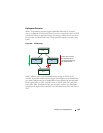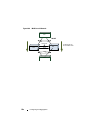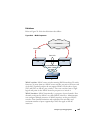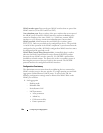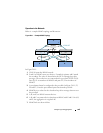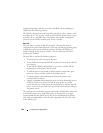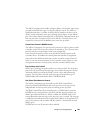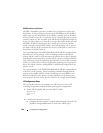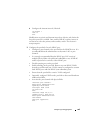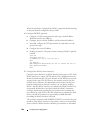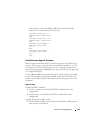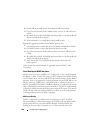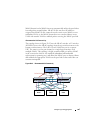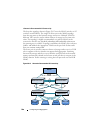
Configuring Link Aggregation 941
The MLAG component internally configures filters so that traffic ingressing a
peer-link is blocked from egress on the peer MLAG switch. The filters are
modified when there is a failure of all the MLAG member interfaces on an
MLAG switch and traffic must egress through selected ports on the MLAG
peer. These filters block incoming traffic on all VLANs configured on the peer
link, not just those configured as part of an MLAG. Therefore, there is no
connectivity between non-redundant ports across the peer-link.
Control Plane Election in MLAG Switches
The MLAG component uses the keep-alive protocol to select a primary and a
secondary switch. The keep-alive protocol is mandatory. The selection of the
primary switch is non-preemptive and is not configurable.
Once elected, the primary switch owns the MLAG member ports on the
secondary device. It handles the control plane functionality of supported
protocols for the MLAG member ports on the secondary switch. Protocol
status is not sent from the primary to the secondary switch. Always use the
management interface on the primary switch to examine MLAG status.
Peer-Link Keep-alive Protocol
MLAG peers exchange keep-alive packets over the peer-link. The keep-alive
protocol is L2-based. Keep-alive messages are used for electing roles and to
inform the MLAG peer that the MLAG switch is alive and functioning
properly. The keep-alive protocol sends messages with an Ether-type of
0x88E8 addressed to destination MAC 01:00:B5:00:00:00.
Dual Control Plane Detection Protocol
The MLAG component may optionally run the Dual Control Plane
Detection Protocol (DCPDP) to detect the presence of the peer switch
independently of the keep-alive protocol running on the peer link.
The Dual Control Plane Detection Protocol is a UDP-based L3 protocol.
DCPDP may be configured on a routed VLAN that does not contain any
MLAG port-channel interfaces. When enabled, the DCPDP sends an L3
control plane detection message to the peer once every second. The message
is unidirectional and contains the senders MAC address in the payload. The
state of the primary and secondary MLAG switches is maintained on both
MLAG peers.
DCPDP runs over an IP interface when enabled.



